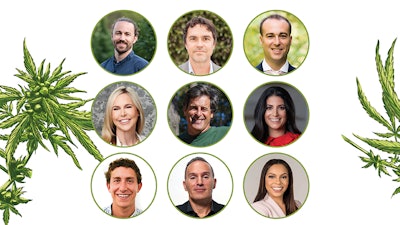
It’s CBT’s annual opportunity to take the pulse of the industry and to provide an overview of how companies are performing, and this year marks the seventh edition. The results of this year’s study—though they were somewhat anticipated—were unlike any other. For the first time since CBT launched the study, more participants (34%) reported revenue decreases than revenue increases (20%). The number of participants reporting revenue drops was also higher than any other year; in 2021, just 5% reported revenues had declined. Additionally, more than half of participants (53%) said they were not profitable in the most recently completed fiscal year.
However, it is noteworthy that despite the challenges that are numerous and constantly changing, 39% said they were profitable, and 20% of participants reported growing revenues. This could be partially attributed to the fractured nature of the U.S. state-legal cannabis markets. The outlook for cultivation companies in California or Oregon might be very different than those that are producing in Florida or Missouri, especially when it comes to price compression. It may be because of new innovations companies have implemented to adapt to new economic realities. Another first in this year’s report: In every single category listed, from lighting to fertigation to environmental control, the adoption of automation increased year over year.
While the data helps illustrate what’s happening and provides a snapshot of this period in the legalized industry’s still very young history, each day, the CBT editorial team reports on the state of the cannabis cultivation industry through conversations with business owners, consultants and others. We publish regular insights on sales trends in individual state markets and Canada, and how specific product categories are performing. Thanks to leaders and experts who generously share their time with CBT, you’ll find articles, profiles, podcasts, videos and more featuring advice and insights from cultivators, dispensary owners and other stakeholders in the industry on CannabisBusinessTimes.com every single day. Here, we’ve selected some of the most compelling quotes, provided comments and prepared statements from CBT reporting and conversations CBT editors have had that illustrate how companies are faring in 2023 and actions they are taking to navigate myriad challenges. This collection of comments helps provide some context and tell a more nuanced story of the state of the cannabis industry in this particular moment.
—Michelle Simakis, editor-in-chief, Cannabis Business Times

Mason Walker, CEO, East Fork Cultivars, Oregon
“The companies our size have really been squeezed because we have such a significant overhead requirement to operate a cannabis business, that you either need to be extremely tiny, so you almost have no staff and just founders working, or you need to be larger where your overhead is a small percentage of your revenue.
“And East Fork Cultivars and Peak Extracts, we’re in that awkward in-between.
“Our merger with Peak was unexpected and arose out of a general sense of ‘we can’t keep doing what we’re doing’ for both East Fork and Peak. We hadn’t pursued any other M&A deals, but when this merger was proposed it quickly became the answer to that feeling of malaise we were experiencing from being in survival mode for such an extended period of time.
“I’m hopeful by telling our story of this merger, that we can offer inspiration and ideas for folks that are in a similar space to us right now. That this is a path that can be taken. You can take two complementary, small craft cannabis companies and put them together and make an organization that can compete better and thrive in the market. My advice would be to look around and see who your friends are and see if it makes sense to merge with them.”
—”What Cannabis Companies Can Learn From a Craft Merger in Oregon,” January 2023

Mojave Richmond, founding member, BioAgronomics Group
“Just like any other crop, a functioning cannabis supply chain requires cultivating the appropriate cultivar, having an established marketplace for downstream products and being able to connect with the specific needs and requirements of the consumer. In the race toward cannabis normalization, we have skipped over key components of crop production and now have a completely fragmented market and supply chain.
“Why this concerns me is large agri-tech business has yet to enter the space in earnest, and when they do, these challenges are far easier for them to overcome than the small farmer. We may have created an entire industry at great cost with a treasure trove of intellectual property, R&D and culture for others to profit from.
“I see the future of cannabis being normalized, just like any other crop. Even though it is far more complex than any other in terms of the plant human relationship, the cultivation side is not rocket science, and the artificially inflated commodity price will crash to a level on par with other crops, in terms of cost to produce. And when this happens, only the most efficient groups with the farthest reach will survive. So, we should focus on what the actual commodity price should be with all the shackles of prohibition removed, and then create a model that fits this future price point.”
—Commentary sent via email, May 2023

Colin Kelley, senior operating partner, Merida Capital Holdings
“… A lot of people and companies were surprised by the impact that the environment that they were in, in their state, was having on their businesses. They were surprised that there was price compression in California or Massachusetts or Michigan or Arizona, or they were surprised by different regulatory issues. … And what I saw was there were some operators that took those careful looks at their businesses on a regular basis, semi-monthly, and either they weren’t surprised, or they were able to very quickly adapt and plan to address this and implement changes.
“One of the common practices around those people who were not surprised or who were very resilient and adaptable was that they used their financials as a jumping-off point. They’re saying, ‘What are our financials telling us about the operations of our company?’ They were asking that question on a very regular basis. What are my expenses? They would start to classify their expenses based on, what are the expenses that are required to exist? And then the expenses that they chose to undertake, and what the impact was, then, on the operations of the business. Are there expenses where I can calculate an ROI for this?
“I think those close looks start to then shine the light on or illuminate the areas of the business where people can make significant changes. They might be outsourcing their payroll [and it might be priced] too high. Their packaging costs might be too high. Some other elements of their business might have cost profiles that are now having negative impacts on the bottom line. So, they’re able to look at, is this something that I can change? Is this an area where I have control? [Can I] find a new vendor? [Can I] partner with somebody else who can do the distribution of this for me? So, then I save money on X, Y, and Z.
“We’ve seen the companies that are willing to look at those expenses, look for those opportunities to be collaborative with other people in the marketplace, and that’s unlocked a lot of opportunities for people because they can then cost cut or control expenses to a certain extent. Beyond that, we have to look for ways to grow the business, and even though it doesn’t feel like it all the time, the cannabis market, in general, continues to grow overall. So, it’s just the opportunities to participate in that growth are now harder to find.”
— “How to Be Successful in Any Environment: Q&A With Colin Kelley of Merida Capital Holdings,” May 2023

Kim Rivers, CEO, multistate operator Trulieve
“Trulieve’s scale and service, operational flexibility, and strong balance sheet are essential for success in the current environment. With increasing adoption and expanding state-level access to cannabis, the industry is well beyond the tipping point. Tremendous opportunities lie ahead for companies that can successfully adapt within evolving landscapes.”
— “Trulieve, Verano, Ascend Wellness Buckle Up For New Growth Markets,” March 2023

John Casali, owner, Huckleberry Hill Farms, California
“Most of my neighbors and friends have been growing here illegally for the last 50 years. And so, when they gave us the opportunity to enter into the regulated market, it really sounded like an amazing way of living—a way to live without fear, a way to sleep good at night … It’s just—we’re doing the best we can and we’re still losing money.
“Really what we’re seeing is just such overregulation, and just, it’s way more stressful being a permitted farm than it was being a traditional farm.”
— “California Cannabis Operators in Peril as American Dream Turns to Nightmare,” March 2023
Lilach Mazor Power, founder and CEO, Giving Tree Dispensary, Arizona
“Arizona is a great market! We are growing year over year. Our adult-use market is still in its infancy—we are seeing more adults being open to [trying] cannabis. We also see more than 40 million tourists visiting Arizona annually. There’s enormous potential here!
“Regulation is top of mind when I think about challenges in the cannabis industry. Beyond the federal level, we face local rules and regulations that can affect our industry—customers, employees and businesses. We are always keeping our finger on the pulse. We’re also facing an oversupply in Arizona which has [caused] price compression and a significant margin shrinkage. I’m hoping companies will realize no one is winning in this race to the bottom and start creating targeted brands that create loyalty beyond price.
“We are definitely dealing with regulations on labeling, with what needs to be on the label. Is a QR code good enough? What information do we need to include? There are added warnings. The Department of Health is doing a great job, but they’re learning as much as we are. What the consumer needs to have access to on the label has been a struggle, and that could mean we order 70,000 boxes of something and then three months later, we learn that we need to add something to the label or something on the box. You can use it, but you have to add a sticker to it because not everything is included. Or [it’s] pregnancy warnings or testing [information], and now we’re having to add the delta-8 and delta-9 [THC potency]. What kind of labeling do we need for that so that the consumer knows the difference between cannabis-derived cannabinoids and hemp-derived cannabinoids?
“We are dealing with price compression. I think the oversupply is a big issue in many markets. It’s just not a sustainable business model. What we’re doing is finding the value that our customers can get. We’re still in competitive pricing, but not only giving-volume-up pricing. So, that could be a loyalty program that people can earn [rewards], service or knowledge, complimentary one-on-one [sessions] with our consultants—there are a lot of things that our community loves us for, and [they] will choose to come to us if we’re competitive but not necessarily operating The Dollar Store model. That could be hiring veterans and women locally or being a part of our community and volunteering and raising funds for charities in our communities where we operate, supporting our artists—things that people see value in and want to be a part of.”
— “‘Progress, Not Perfection:’ Lilach Mazor Power Reflects on Her Role as Board President of the Arizona Dispensaries Association,” January 2023

Lex Corwin, founder and CEO, Stone Road Farms, California
“… You are going to see so many people leave the industry, especially smaller, family-owned operators. … And then the consumers are going to be left with the big alcohol and big tobacco suite of brands, where it’s 10 holding companies that each have 10 different brands, and you’re going to go into a dispensary and there aren’t going to be any cool, small brands left. They’re going to be completely run out of business. It’s an unfortunate reality, but it’s happening so much faster than people think [and] than consumers ven know.
“There are so many brands that bring products to market that the cannabis industry is either one, not ready for, or two, there’s just not a big enough group of people to support it. It’s an unfortunate reality but it’s a reality nonetheless, [that] 80 percent of the market in California is supported by the 20 percent [of consumers who are] ‘super heavy users,’ the people consuming every day, multiple times a day. We see it all the time—it’s the people that know the budtenders’ names and they come in every day or every other day or once every three days. Yeah, they might only be buying an eighth and a few prerolls, but they’re such consistent buyers.”
—“How Stone Road Farms Maintains Steady Growth Amid Industry Challenges,” February 2023

George Archos, founder and CEO of multistate operator Verano
“We remain confident in our ability to continue growing the business in a challenged environment, will closely monitor developments in Washington, D.C., on the reintroduction of SAFE Banking legislation, and look forward to leveraging our deep experience in transitioning markets as we approach the forthcoming launch of adult-use sales in Maryland.”
“Trulieve, Verano, Ascend Wellness Buckle Up For New Growth Markets,” March 2023

Hope Wiseman, owner, Mary & Main, Maryland
“People are used to, when they think of recreational, they often think of West Coast markets like Colorado and California, and those markets have a lot of variety and different brands. I think Maryland will take some time to ramp up on all the different brands and different things.
“I feel like right now the market is heavily driven by price, not as much by brands or actually, I wouldn’t even say driven really by the quality of the product. I think that that will change going into adult use.
“It’s not so much about these discount wars that we’ve been in. I feel like we’ve been in this race to the bottom, and now that adult-use is here, you just have a much wider customer base. I think we’re going to see brands emerge and more experiential marketing, and I think you’re going to see cannabis come more to the mainstream in Maryland.”
“‘Feel Confident in Opening Up a Dispensary’: Q&A With Mary & Main’s Hope Wiseman,” May 2023






















